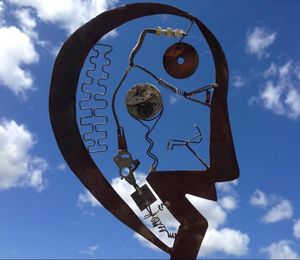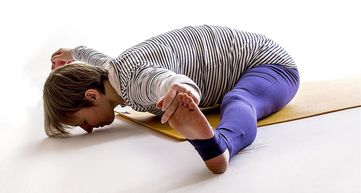Why is our mind so important when we practice?
We can integrate mindfulness and yoga at varying levels and degrees. We can know how the body moves, we can be aware of our breathing, its depth and rhythm, awareness of muscles tensing and releasing and the shape our body makes using the mind as the observer. We can also invite the mind to observe itself as well. This capacity to directly observe mind and mind states such as frustration, annoyance, fear, wanting and the impact they have reveals a more subtle form of automatic pilot, where strength and physical effort push through inconvenient mind states in the search for balance and ease.
Be curious about your mind
When our mindfulness expands to include mind states we begin a process of increasing curiosity that accepts we are not always calm, happy and unstressed even in our practice and how this impacts our physical experience. Our sense of limitation may have nothing to do with our physical body but that doesn’t stop us using strength and effort to push through in our impatience, irritation or desire to succeed. In doing so we miss the subtlety that yoga has to offer and a ‘good’ practice can simply become one where we feel ‘good’, where the endorphins and dopamine give us a high and cortisol reduces so we feel calm. This is like sugar candy, a pleasant sensation, a treat to be enjoyed when it occurs but if we expect this as a result every time, what happens when it doesn’t?
Without discriminating curiosity, we are in danger of spiritual by-pass and get caught in the idea that because we practice yoga or meditation, we should always be calm, happy and without discomfort. Innumerable times in the last 25 years I’ve been told, ‘you’re a yoga teacher, you don’t have any stress’. Implicit is the invitation to believe that these sensations and emotions are a sign of spiritual failure or the yoga ‘not working’ and so either should not be felt or should be ‘held in check’. Nothing is farther from the truth.
Mental obstacles are not your enemy
The release from our addictions or aversions or other mental obstacles such as doubt, lethargy, indolence, procrastination, restless and worry are very high attainments in the Buddhist path to freedom, so they are going to be around for quite a while. Our yoga practice is not a place to escape them, but a safe place to work with them. It’s important to realise that they are not ’bad’ of themselves and simply arise because the conditions are right for them to do so. What matters is our next step and our yoga practice is the ideal place to explore this.
Our aversions can be even more insidious. We can often brace, push, strive, demand adjustment or even take anti-inflammatories to subjugate and punish our body using our desires and goals as cover from what is often a rejection of ourselves; if this is where we are with our practice, a trip to the candy shop can confuse the deeper work of learning kindness and loving acceptance towards ourselves.
Connecting to the felt experience
To start to see what is really going on, it’s important for us to engage both our 1st and 2nd brain in our practice: our first brain is our rational, logical, reasoning, concept and language based brain the one that understands the placement, shape, sequence of the posture; our second brain is all about the felt experience and our reaction to it. It is completely non-verbal and by-passes the 1st brain.
The felt experience embraces the head and importantly the physical brain as well as the rest of the body and yet many students, when asked to point to their body, indicate everything below their chin as if the body is the life support system for the thinking mind. Once we become sensitive to the sensation of the brain we begin to notice how there is a feeling of tension whenever addiction or aversion takes it out of balance.
Soft Listening
As we gradually learn to release this tension we tap into something quite extraordinary we call ”soft listening” that opens our heart to a more compassionate and loving acceptance of ourselves and a greater sense of mental balance. Our body immediately responds to this, opening up and softening allowing the support of the energetic body to replace the need for strength and allowing our body to move into balance instead of striving and bracing. Everything begins to flow and we notice a lightness and ease in postures where before there was heaviness and effort. We experience effortless backbends and weightless inversions. Our body is the same but our relationship to mind states has changed. In this way our practice becomes increasingly effortless, the breath deep and at ease allowing us to express ourselves at our best and revealing a clear-awareness that is naturally mindful, joyful and full of still energy.
Truly our mind is part of our posture and that has made all the difference.


 RSS Feed
RSS Feed